Authentic Kalighat Painting of a Woman in Yellow – 1 Pcs
₹2,000.00
The origins of the Kalighat Painting of a Woman in Yellow trace back to the early 1800s when rural patuas (folk artists) migrated to Kolkata and began painting for pilgrims visiting the Kalighat Temple. Moving away from traditional scrolls, they adopted single-sheet paintings on paper, using natural colors and bold strokes. These artists depicted deities, mythological tales, and later, scenes from daily urban life.
| Artist | |
|---|---|
| Painting Medium | Natural Color on paper |
| Frame status | unframed |
| Shipping | 1-3 Business days after placing the order |
| Dimensions | 7 * 11 in |
The Kalighat Painting of a Woman in Yellow is a stunning portrayal of Bengal’s cultural identity and feminine grace. Emerging from the vibrant lanes near the Kalighat Temple in 19th-century Kolkata, this art form marked a new chapter in India’s visual storytelling. The painting reflects both simplicity and depth—depicting a woman draped in a yellow saree, her form defined by fluid lines, natural poise, and quiet dignity. The Kalighat Painting of a Woman in Yellow embodies timeless charm, capturing the soul of everyday Bengal with elegance and precision.
Origins of the Kalighat Painting Tradition
The origins of the Kalighat Painting of a Woman in Yellow trace back to the early 1800s when rural patuas (folk artists) migrated to Kolkata and began painting for pilgrims visiting the Kalighat Temple. Moving away from traditional scrolls, they adopted single-sheet paintings on paper, using natural colors and bold strokes. These artists depicted deities, mythological tales, and later, scenes from daily urban life. The Kalighat Painting of a Woman in Yellow reflects this shift—focusing on human emotion and modern identity rather than solely religious iconography.
Symbolism of the Woman in Yellow
In the Kalighat Painting of a Woman in Yellow, the yellow saree holds profound meaning. Yellow symbolizes prosperity, purity, and spiritual enlightenment in Indian culture. The woman’s composed posture and confident gaze represent the evolving image of Bengali women in the 19th century—rooted in tradition yet embracing self-awareness. The Kalighat Painting of a Woman in Yellow is not merely a portrait; it symbolizes femininity, dignity, and empowerment during a period of social transformation.
Artistic Style and Visual Composition
The Kalighat Painting of a Woman in Yellow showcases the hallmark style of the Kalighat school—bold brushstrokes, fluid contours, and minimal backgrounds that highlight the subject’s grace. The artists emphasized form and gesture over ornamentation, allowing emotion to flow through line and color. The yellow saree, rendered with delicate gradients, enhances the visual warmth of the composition. The Kalighat Painting of a Woman in Yellow thus reflects the harmony between restraint and vibrancy, a defining quality of this genre.
Materials and Techniques Used in Kalighat Paintings
Each Kalighat Painting of a Woman in Yellow was meticulously crafted using eco-friendly natural pigments. Artists extracted colors from locally available sources—red from vermilion, yellow from turmeric and clay, white from chalk, and black from soot known as bhushokali. These pigments were mixed with natural binders like gum arabic to ensure durability. The painting surface was handmade paper, burnished for smoothness. Every Kalighat Painting of a Woman in Yellow thus reflects the artisans’ harmony with nature and their commitment to sustainable craft traditions.
Cultural and Social Reflection
The Kalighat Painting of a Woman in Yellow offers insight into the changing social fabric of 19th-century Bengal. As urbanization spread and new ideals of modernity emerged, Kalighat artists began portraying women not just as divine figures but as independent, reflective individuals. The Kalighat Painting of a Woman in Yellow captures this evolution—her confident stance, minimal adornment, and direct expression symbolize self-possession and quiet strength, marking a break from stereotypical portrayals of femininity.
Emotional and Aesthetic Appeal
What makes the Kalighat Painting of a Woman in Yellow captivating is its emotional subtlety. The woman’s gaze conveys both introspection and poise, inviting the viewer into a silent dialogue. Her yellow saree becomes more than attire—it becomes an aura of serenity and resilience. Through economy of detail and expressive linework, the Kalighat Painting of a Woman in Yellow evokes universal emotions of grace, dignity, and contemplation.
Influence and Legacy of Kalighat Art
The Kalighat Painting of a Woman in Yellow represents the legacy of the Kalighat school, which profoundly influenced modern Indian artists such as Jamini Roy. The simplicity, rhythmic lines, and social realism of Kalighat art laid the foundation for India’s modern art movement. Today, the Kalighat Painting of a Woman in Yellow continues to be celebrated in galleries and museums worldwide as a symbol of Bengal’s artistic innovation and cultural vitality.
Why the Kalighat Painting of a Woman in Yellow Stands Out
The charm of the Kalighat Painting of a Woman in Yellow lies in its ability to combine visual beauty with deeper meaning. It transcends decorative appeal, becoming a reflection of inner strength, cultural evolution, and aesthetic purity. For collectors and admirers, it is not merely a piece of art but a glimpse into the heart of 19th-century Bengal—where art was both a reflection and a rebellion.
Explore more handcrafted artworks in our Pattachitra Collection or follow The Bengal Craft on Instagram to see new arrivals and artisan stories.
Check out our other products- Pattachitra
Be the first to review “Authentic Kalighat Painting of a Woman in Yellow – 1 Pcs” Cancel reply
Related products
Pattachitra





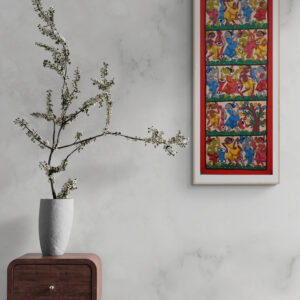
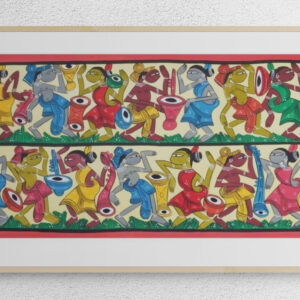
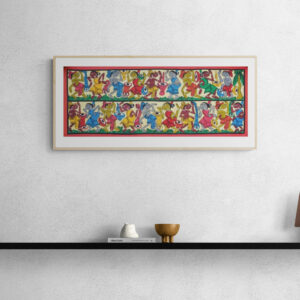
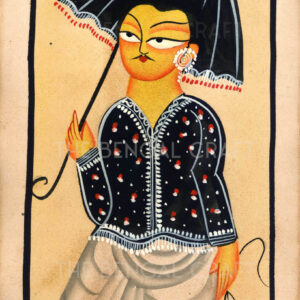

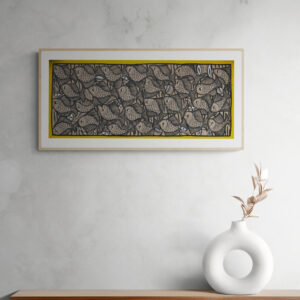

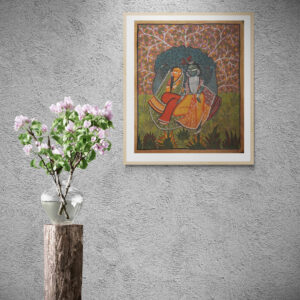
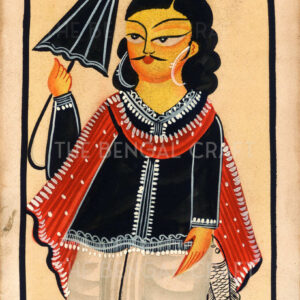
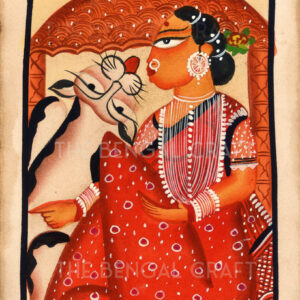

Reviews
There are no reviews yet.